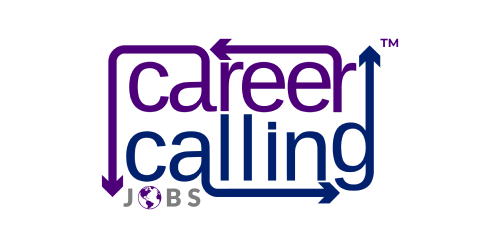Melbourne, Australia – July 28, 2025 – Australia's tertiary education system is facing a critical juncture. Despite crippling skilled worker shortages, particularly in booming sectors like engineering and information technology (IT), a significant disconnect persists between the capabilities of university graduates and the practical demands of employers. Jobs and Skills Australia (JSA) Commissioner Barney Glover has issued a stark warning: universities are currently failing to produce "work-ready" graduates, jeopardising Australia's economic future. This pervasive issue, highlighted by recent JSA research and echoed by industry bodies, demands urgent, collaborative action from government, education providers, and employers to bridge the "suitability gap" and ensure graduates are truly prepared for the 2025 workforce.
Startlingly, JSA's employer surveys reveal that for every job vacancy in engineering or IT, between 10 and 30 technically qualified applicants apply. Yet, employers deem a staggering 70 to 90 per cent of these applicants "not suitable." This isn't an oversupply issue; it's a profound challenge of employability, rooted in a perceived lack of practical skills, essential "soft" skills, and real-world experience.
The Alarming "Suitability Gap": More Than Just Technical Skills
Professor Glover, a former vice-chancellor of the University of Western Sydney, pinpoints the core of the problem: a significant gap between the academic knowledge acquired by graduates and the hands-on skills employers desperately need. While graduates may possess the technical qualifications, they often lack the crucial "employability skills."
Employer concerns consistently revolve around several key areas:
-
Lack of Hands-on Experience: Many graduates, even in highly technical fields like engineering and IT, arrive in the workforce with insufficient practical exposure. This deficiency often stems from a limited extent and quality of work-integrated learning (WIL) and placements during their studies.
-
Deficient "Soft" or Cognitive Skills: Beyond technical prowess, employers are increasingly frustrated by graduates' inability to communicate clearly, work effectively in teams, or demonstrate strong problem-solving abilities. These "soft" skills, or cognitive skills, are fundamental to navigating dynamic workplace environments.
-
Foundational Skills Erosion: Australian Chamber of Commerce and Industry (ACCI) director of skills, employment, and small business, Jodie Trembath, highlights an even more concerning trend: some university graduates are reportedly struggling with foundational school-level English and STEM (Science, Technology, Engineering, and Maths) subjects. This "drop-off" in basic competencies significantly impedes their ability to integrate effectively into the professional world.
Engineers Australia Chief Engineer Katherine Richards further underscores this crisis in the engineering sector. Despite a projected need for 20 per cent more engineering professionals by 2034, with 70,000 engineers set to retire, migrants currently comprise nearly two-thirds of Australia's engineering workforce. Employers' reluctance to hire Australian graduates, including migrants and international students who hold the right technical qualifications, is driven by "suitability gaps" such as a lack of local experience, limited professional networks, and difficulty demonstrating crucial communication and leadership skills. Employers often favour experienced engineers, creating a systemic barrier for early-career professionals to gain a foothold.
Across all industries nationally, the latest JSA data reveals a troubling statistic: employers failed to fill 30 per cent of advertised jobs in the three months to March this year. Despite receiving an average of 29 applications per vacancy, only nine applicants typically possessed the right qualifications, and a mere four were considered suitable. This skills mismatch is particularly acute for technicians and trade workers, where nearly half of all jobs remain unfilled, despite 23 applications per vacancy. While clerical and administrative roles were easier to fill, even here, out of 46 applicants, fewer than 10 were qualified, and only seven were deemed suitable.
The "Whole Package": Attitude, Communication, and Teamwork
Recent JSA research specifically focusing on young workers reveals a profound truth: employers are most likely to hire applicants with "the right attitude." The primary reasons young job seekers miss out on opportunities are a lack of experience, qualifications, and skills, coupled with poor availability. Importantly, a lack of communication skills, including proficiency in English, and poor presentation at interviews also frequently lead to rejection.
The JSA report unequivocally concludes that employers are seeking "someone with the whole package – education, relevant experience and employability skills." It stresses that "Having employability skills such as having the right attitude, good communication skills and the ability to work in a team will ensure that the young job seeker is job ready. These are the values that employers will not compromise on." This highlights a critical need for education providers to embed these "non-negotiable" attributes into their curricula.
The report also offers practical pathways for young people to gain a "foot in the door," recommending part-time or casual jobs, volunteering, and apprenticeships as valuable avenues for acquiring essential experience and employability skills.
Bridging the Divide: The Call for Collaboration and Blended Learning
The challenges facing Australian graduates are multifaceted, requiring a unified response. Professor Glover is emphatic that current "turf wars" between universities and vocational education and training (VET) providers, including TAFE colleges, are "causing problems in the labour market." A more integrated approach is not just desirable but essential.
Professor Glover urges a paradigm shift, calling for greater collaboration between universities, employers, and VET providers. The goal is to ensure that what is taught is both theoretically robust and practically relevant. He advocates for:
-
"Blended" Degrees: Universities must offer more programs that combine rigorous theoretical academic knowledge with practical vocational training. This "blended" approach is designed to produce genuinely "work-ready" graduates.
-
Employer Curriculum Involvement: Employers must play a more active role in reforming university curricula. Their direct input is vital to ensure that educational content aligns precisely with industry needs and expectations.
-
Degree Apprenticeships and Vocational Degrees: The introduction of new programs like degree apprenticeships and vocational degrees is seen as a key innovation. These models are designed to foster closer ties between industry, TAFE, and universities, leading to the development of truly industry-focused course materials within a dual-sector context, complemented by extensive work placements. This approach ensures graduates gain hands-on experience concurrently with their academic studies, directly addressing the "suitability gap."
The CAQA Perspective: Work Placement as a Non-Negotiable
Echoing Professor Glover's sentiments, Mr. Sukh Sandhu, CEO of Career Calling International and CAQA, a Forbes Business Council Member and multi-awarded specialist in compliance, risk, quality assurance, and education, strongly advocates for a mandatory work placement component in all courses, whether in VET or Higher Education.
"If education’s purpose is to be employment-focused," Mr. Sandhu asserts, "it shouldn’t stop at theoretical accumulation or abstract qualifications. Curricula need to be highly practical and align directly with industry needs, ensuring graduates are job-ready and equipped for real-world challenges."
Mr. Sandhu's own experiences underscore the power of practical education. Learning web design and development tools like Macromedia Dreamweaver, Photoshop, and Illustrator at just 13, he was already teaching these skills to multi-million and billion-dollar companies in the polytechnic education/VET sector by age 14. This was possible, he explains, "because I was taught hands-on skills, not just abstract concepts. Practical education makes all the difference. Otherwise, students are wasting their own, their parents', or the Government's money, time, and resources. Not cool."
Mr. Sandhu further clarifies that advocating for practical, work-integrated education is not about reducing life to "profits or productivity alone." Rather, it's about "equipping graduates, no matter their field, with the confidence and capability to choose how they wish to contribute, whether that’s in business, creative fields, community services, or areas that enrich society in profound and non-commercial ways." This holistic view emphasises empowerment and choice through practical competence.
Industry's Role and the Future Path
The sentiment from industry, as voiced by Philip Baskerville, a respected figure in the sector, suggests that "a university's goal during the undergraduate programs is to discover the next researchers for that University." He argues that "It is in fact Industry that needs to train Industry. It is not the responsibility of Universities." Baskerville contends that industry "gave up this responsibility when profits became the focus and when Governments started to fund Universities to undertake this pseudo-industry training." He proposes that governments redirect education funding to support industry-led training, viewing training as a potential "revenue line" for businesses, citing examples like Flight Centre Travel Academy and L'Oreal Canada Academy.
While this perspective highlights a historical shift in responsibility, the prevailing consensus from JSA and other industry bodies is that a collaborative model is essential for 2025 and beyond. As Steven Conrad Harrison points out, "education is concerned with foundational knowledge and enabling competencies, whilst training is concerned with application and developing proficiency." The solution lies not in an "either/or" scenario but in a "both/and" approach where universities focus on foundational science and critical thinking, while training academies (potentially industry-led) and integrated work placements provide the necessary application and proficiency development. This dual approach could particularly benefit migrants who possess strong technical qualifications but require "training in local requirements."
Ultimately, the goal is to "better connect education and employment" to meet Australia's future infrastructure, energy, and defence needs. The latest Graduate Outcomes Survey from the federal Education Department shows that while 79 per cent of university graduates were in full-time work four to six months after graduation in 2023 (with engineering at 89 per cent and IT at 74 per cent), the "suitability gap" still means too many qualified applicants are being overlooked.
The path forward for 2025 is clear: universities, VET providers, and employers must dismantle their respective "turf wars" and embrace genuine collaboration. Blended degrees, robust work-integrated learning, and a shared commitment to developing both technical mastery and essential employability skills are not merely desirable; they are critical for securing Australia's economic prosperity and ensuring its graduates are truly "work-ready." The time for discussion is over; the time for decisive, collective action is now.


































